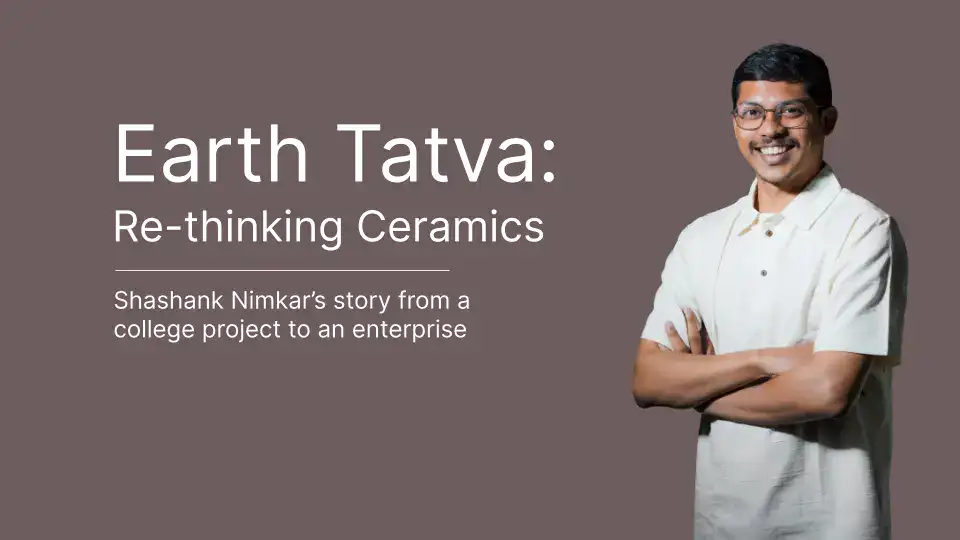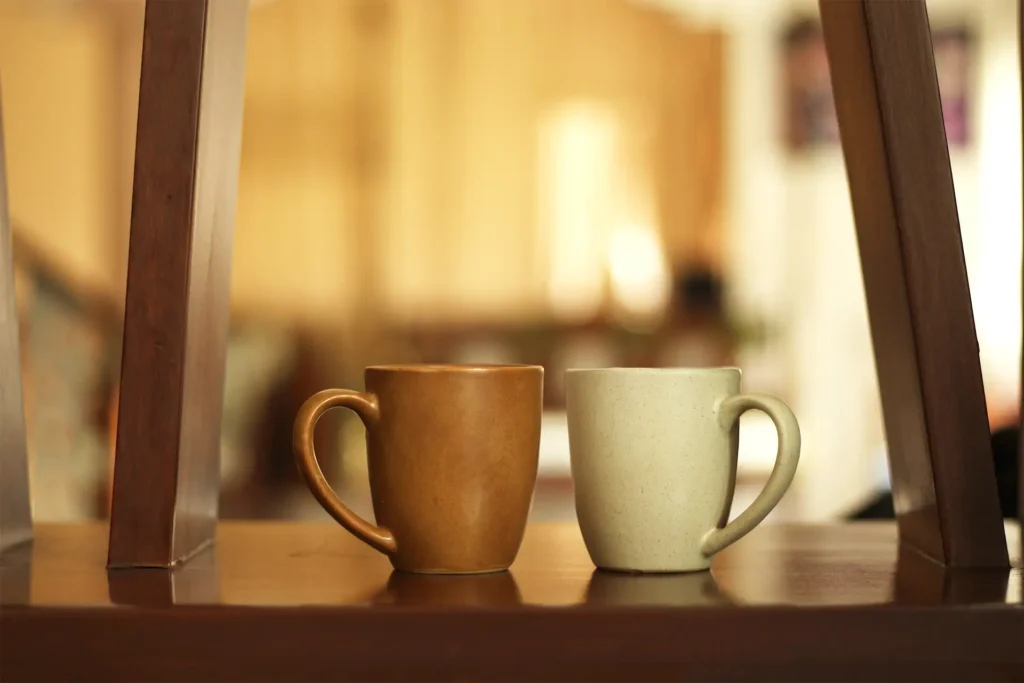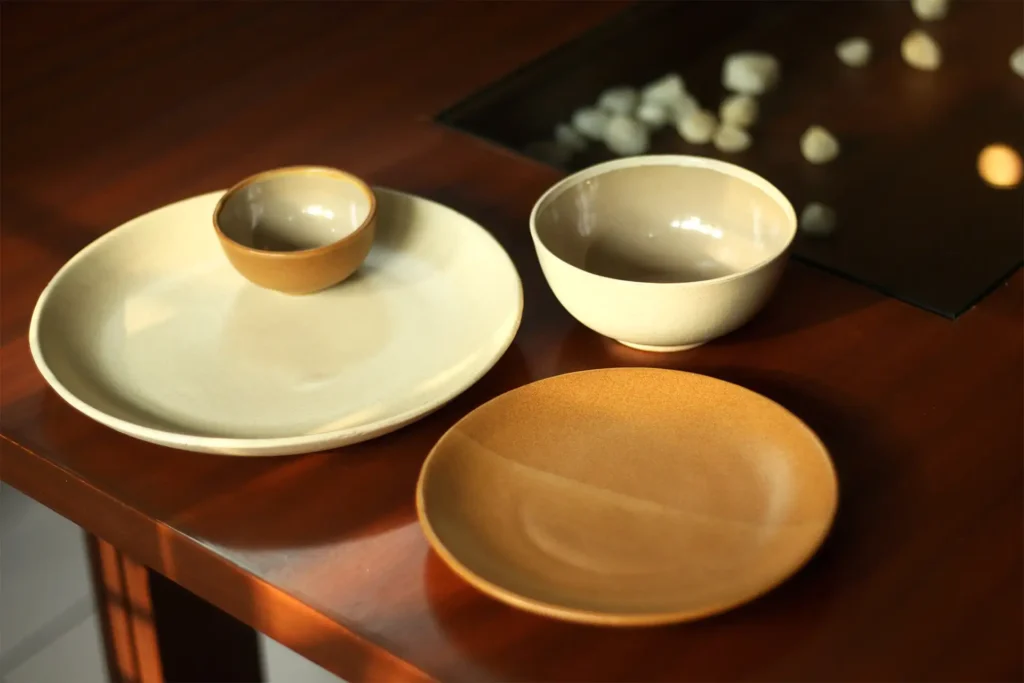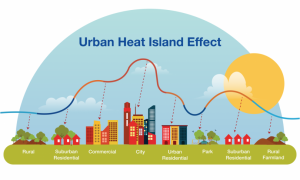Earth Tatva: changing our perception of ceramics
- Achint
- July 20, 2022

The first thing that comes into our mind when we hear ceramics is aesthetically pleasing material. It’s versatile, colorful ,and can be found everywhere in India. And yes, it is made of some natural ingredients such as clay or terracotta. But what if there is another side of the coin, we’re not aware of? Shashank Nimkar, the founder of Earth Tatva opened our eyes and gave us insight into the highly versatile, delicate and creative process of making sustainable ceramics.
Shashank Nimkar, is a multi-award winner, highly creative and humble person who started his entrepreneurial journey as a student at NID. As a student, he has always been inclined towards seeing the bigger picture behind things.
Shashank recalled his school days talking about how he would switch off the fans and lights in empty classrooms. Upon interrogation by his friends, he would reply that the electricity of the nation is being wasted and eventually the school will raise the fees to recover the expenses. He found this incident funny and amusing as he recalled.
After that, Shashank finished his degree in animation. Despite the prevalence of digitalization, Shashank was drawn to the physical qualities of animation. His favourite type of animation was stop-motion. But he became aware of the injustice being done while he was working at an advertising agency in Mumbai. After filming, huge sets were being trashed. “Either they didn’t have time to think about it, or the industry was too wealthy to afford it.” Shashank looked back.
His life’s trajectory changed at that point. He became aware of the volume of rubbish generated and dumped in landfills. A similar incident took place when he went for an industrial visit to a ceramic production hub. He saw heaps of industrial waste being dumped on the roads. There was nowhere to hide. Not even landfills. That’s when he realized how the archaeology of India was being wasted on the roads.
When Shashank realized that ceramics don’t biodegrade and ended up being trashed, he was struck by an epiphany. It was then he decided that it was upon him to take this self-initiated project and turn it around.
And that’s how Earth Tatva was born.
Just kidding! We wish it was that easy. At least that’s what we expect right? It’s ceramics. What could possibly go wrong in making it sustainable?
Earth Tatva journey from project to an enterprise
Shashank’s graduation project of doing something with ceramic waste started by learning how to make ceramics by hand. He didn’t want to create a modified version of a pre-defined assignment, but wanted to add something to the environment. As his research about ceramics continued, he realized how the process of making ceramics is not very eco-friendly.
Ceramics are made from naturally occurring materials. As a result, there is a considerable demand for natural resources in the manufacturing of ceramics. While ceramics derived from Magnesite are frequently utilized for high-temperature applications, clay minerals like Kaolin account for the majority of routinely used ceramics. This leads to more mining, thereby leading to the rapid depletion of the topsoil.
Shashank also realized that even though clay is natural, it requires a lot of energy to be transformed into ceramic. When fired at high temperatures (1000-1200℃) the process becomes irreversible. Hence, the usage of ceramics gets restricted to single-use, thereby posing a threat to the environment.
Earth Tatva provides clean, eco-friendly, and food-safe ceramic products. With their upcoming launch of tableware, it was quite a challenge for them to make sure that the recyclable ceramics are food safe.
Researches also show that the annual wastage of ceramics at one production unit ranges to almost 21,600 tons. This amount of wastage can be due to multiple reasons, one being the delicacy of the ceramic. As there is no proper way to fix ceramics, the post-consumer waste also ranges high. To this Shashank commented on how we need to change our own perception of beauty. “Industry has to waste so many pieces to reach a visual standard, even though it is functionally perfect. One should appreciate each product for its own beauty and characteristics, especially when handmade.” Shashank said.
It took Shashank three months of experimental research to find out that clay can be used as a binder for recycling multiple cycles. He remarked that it is really easy to make a recycled product by combining cement or raisin. But that ends the cycle of that product. It cannot be repurposed or reused for the next cycle.
Shashank did a lot of tests in his institute with different recycled compositions and processes like casting and molding. After so many failures, slip casting worked for him. He set a benchmark for using at least 50% of recycled materials in his product and also making it easy to reuse. He made a few prototypes and displayed his products at a fair in NID, Gandhinagar. He was unsure if the consumers would understand. However, his research-based innovation shined out.
We asked Shashank what made Earth Tatva ceramics different from other ceramics. To our surprise, we learned how little changes, keen observation and determined passion can make big changes. Shashank explained to us how normal ceramics are 100% virgin, either made of clay or other materials.
Earth Tatva ceramics is made from 60% recycled ceramics and 40% virgin material. This means that less energy is used to create Earth Tatva ceramics. But also, this scientifically crafted ceramic is 35% more stronger than normal ceramic. Shashank also told us that this new recycled ceramic material can be used in existing ceramic manufacturing setups so no upfront cost is needed to adapt the green material. Making it and the final products affordable for all stakeholders. This is a perfect example of being sustainable instead of building sustainable.
Not only Shashank crossed his benchmark for using recycled material, but his products also involve 60% less mining and are 100% recyclable for many cycles. This closed-loop manufacturing is what successful recycling is based on. Read our previous article on recycling to know more about close-loop manufacturing.

“Industry has to waste so many pieces to reach a visual standard, even though it is functionally perfect. One should appreciate each product for its own beauty and characteristics, especially when handmade.”
Shashank Nimkar, founder Earth Tatva Tweet
Discover products and services in sustainability
Get on step closer to making eco-friendly choices
Advice for young students
“I had no background in material science, hence I did not complicate things and managed to do it the simple way.” told Shashank. The multidisciplinary approach used by Shashank is an inspiration for students. “I started as a student. My institute helped me a lot. Provided me with a workspace. Plus, I was allowed to make mistakes. I maybe the catalyst of this, but many people helped me” said Shashank.
According to Shashank, students should have organic observations through all experiences. They should not focus on finding a loophole. There are a lot of benefits of starting as a student. Mainly, one can experiment without putting a lot at risk. If one is interested to know things, they will from one way or the other.
“I always wanted to create something I can be creative with. Like Fevicol. I was always inspired by Fevicol. It’s just a mixture of polymer and water in a bottle. Yet it empowers so many people to create things.” Said Shashank. Beautiful solutions are simple, something that resonated with Earth Tatva’s philosophy.
How can you contribute to Earth Tatva?
Earth Tatva is soon launching their ceramic tableware in the market. At this stage, they want to target the direct consumers and see how their products perform. Their future goals involve making the ceramic process more eco-friendly by using renewable energy, treating water properly and also starting their B2B services. Earth Tatva focuses on innovation and hence are also open to providing royalty-based manufacturing license to further the impact.
Shashank not only helped us to know how we can change our perspective towards ceramics but also made sure to give us a real picture of what goes behind making an eco-friendly, reusable and recyclable product.

Recently, Shashank has been nominated for India’s most prestigious Awards of Greenpreneur Convention & Awards 2022 – Green Revolution: The Need Of The Hour For Sustainable Development.
Please show your support and vote for him. It will take less than a minute to submit your valuable vote. Kindly submit your vote by clicking on the link.



